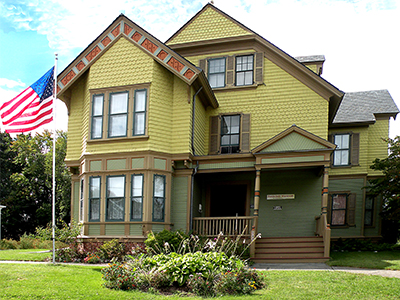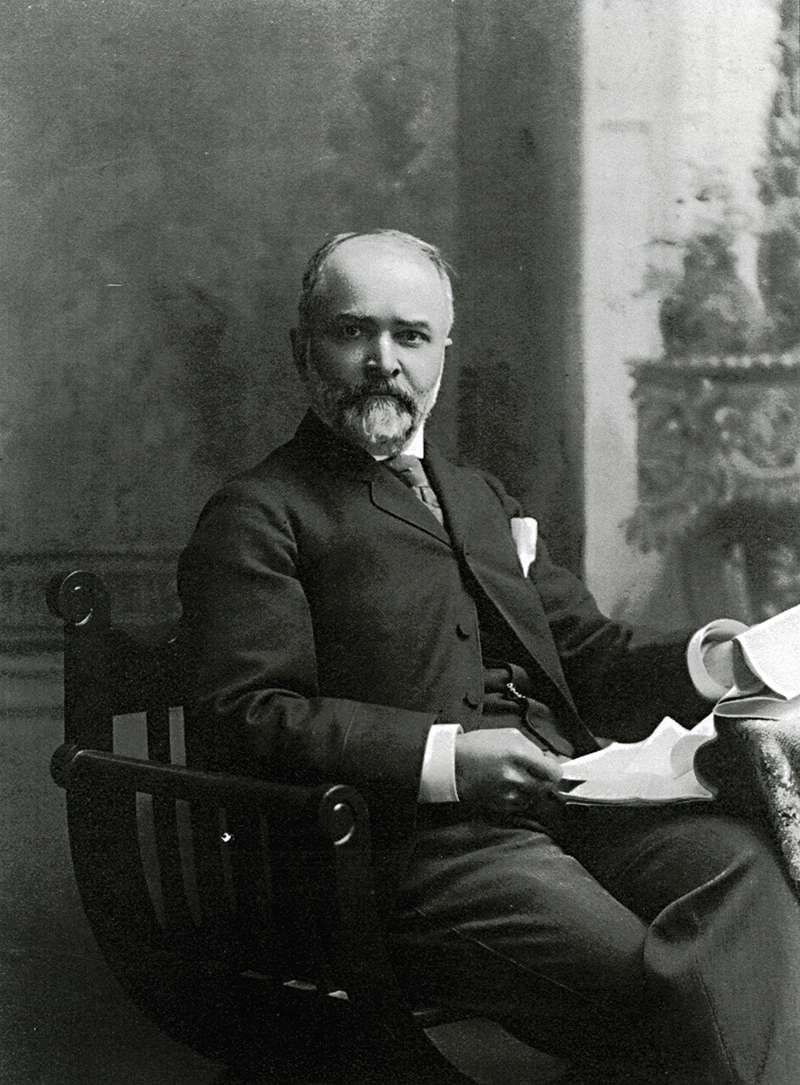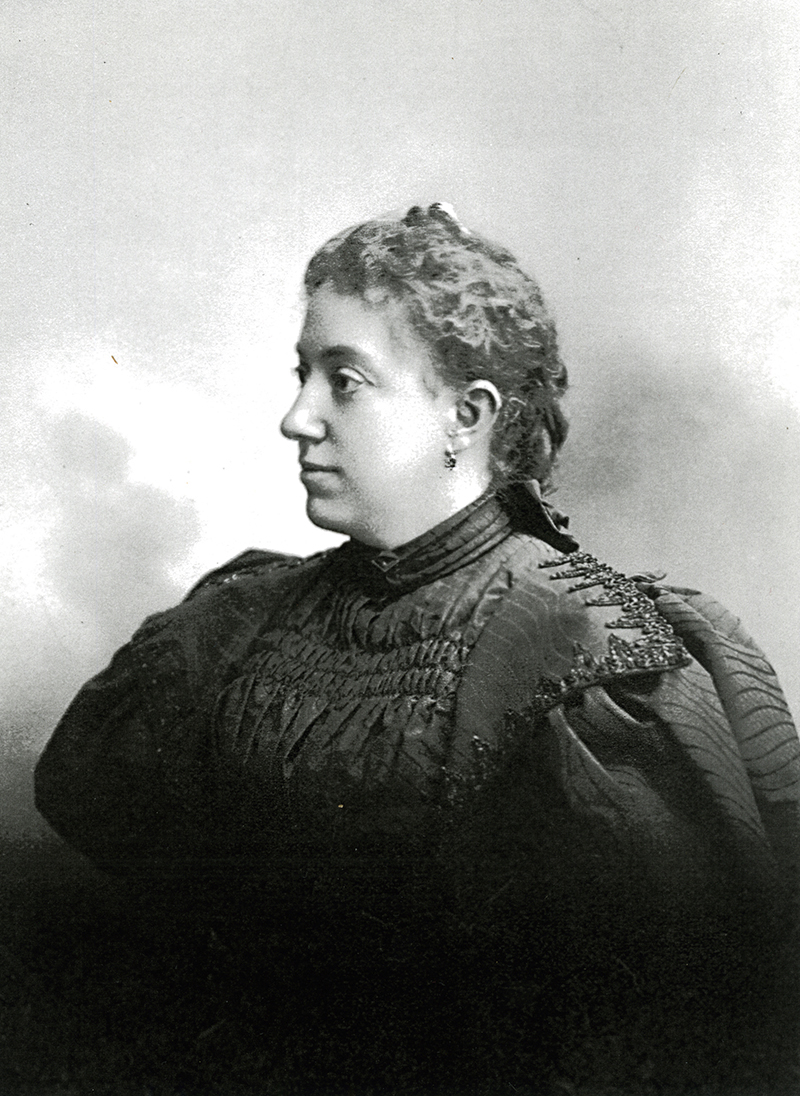About The Peekskill Museum

The Peekskill Museum is a community-supported cultural organization, which had its beginnings in 1946 with the acquisition of the former Herrick family home
Its mission is to collect, preserve, study and display objects, documents, photographs and other items relating to the history of Peekskill and its immediate surrounding area. It offers information about Peekskill and regional history through exhibits, programs and publications for educational and cultural purposes.

THE HERRICK HOUSE
Described by many as a Queen Anne in the Shingle Style, the Herrick House was designed by a classmate of Herrick’s at Amherst College, William Rutherford Mead who in 1872 had partnered with Charles Follen McKim. In 1879 they would be joined by Stanford White to form McKim, Mead and White. Although the exact date of construction is not known, it was featured in the June 30, 1877 issue of American Architect and Building News. The building next door to the Museum was the Herrick’s carriage house.
The Peekskill Museum was originally part of the Field Library. In 1944 Chester Smith facilitated the acquisition of The Herrick House from Mrs. Ida Adams and it opened to the public May 17, 1946.

Dwight Stiles Herrick
THE HERRICKS OF UNION AVENUE
The Peekskill Museum is housed in the former home of Dwight Stiles Herrick. Born in 1845 at Chicopee Falls, Massachusetts Mr. Herrick was descended from a distinguished New England family. Educated at Amherst College, Herrick moved to Peekskill in 1867. He taught classes at the Peekskill Military Academy and then studied law with one of the Academy’s founders, Edward Wells. He became a lawyer in 1870, and later a Trustee at the Academy. Herrick’s office was located on the second floor of the Griffin and Lent Drug Store at 936 South Street. He was also a part owner of the Hudson River Brick Manufacturing Company.
Dwight married Sarah Frances Simpson, daughter of wealthy businessman John Simpson in 1871. Mr. and Mrs. Herrick were organizers and members of the local Handel and Hayden Music Society and Mrs. Herrick was very active in the Dorcas Society, a local charitable organization. During the Centennial Celebration of 1876 in Peekskill, Dwight Herrick led a chorus of over 200 voices in the “National Anthem” opening the program. Dwight S. Herrick died in 1908 and Sarah passed away a year later in 1909. They both are buried at Hillside Cemetery in Cortlandt.

Sarah Frances Simpson Herrick
A Brief History of Peekskill
The Native American Kitchawank people called this location “Sachoes.” Dutch trader Jan Peeck made first contact with the Kitchawanks and began a trading post on “Peeck’s Kill”, at the far end of Annsville Creek on the shores of what is now Peekskill Hollow Brook. Peeck's Kil (meaning “stream" in Dutch) thus became the recognized name for this locale.
By the time of the American Revolution Peekskill had become an important manufacturing center with many mills on the streams feeding local creeks and the Hudson. The continental Army established its headquarters in Peekskill in 1776 with General Washington using the Birdsall House on Main Street as his headquarters. Peekskill was also a tempting target for the British army and was attacked twice in 1777 destroying supplies and the mills.
An important episode in Peekskill’s history during the Revolution was when the British warship “Vulture” delivered John Andre to meet with Benedict Arnold. John Peterson and Moses Sherwood of Peekskill instigated a rifle and cannon attack that helped foil the conspiracy. One of the cannons believed to have been involved in that action is now mounted on an inscribed base in front of the Peekskill Museum. Local citizen John Paulding along with two of his compatriots interrogated and captured the spy Andre at Tarrytown.
Taking advantage of the waterpower it offered, a number of mills and tanneries sprang up along Magregere’s Brook, which runs down through Peekskill. With a plentiful supply of local iron, Peekskill became a center of stove and plow production beginning in 1820 with Stephen Gregory’s small forge on Main Street. A blast furnace at Annsville Creek produced pig iron for the burgeoning iron foundries with its own narrow gauge railroad running to the Todd and Croft iron mines in Putnam County. By the late 1800’s there were eight foundries producing 200,000 stoves a year.
The Annsville area also boasted a large wire mill and Captain Joseph Binney’s Peekskill Chemical Works. The lampblack he produced there was the foundation of what his son and nephew would build upon to begin Binney & Smith, creators of Crayola Crayons.
On February 19, 1861 Abraham Lincoln stopped in Peekskill to deliver a short speech. His appearance is marked every year with a ceremony by the Lincoln Society. During the Civil War Peekskill was used for several stops on the Underground Railroad.
As the foundries began their decline around 1900, a new concern took their place when Charles and Maximillian Fleischmann chose Charles Point on the Hudson River at Peekskill as the site for their yeast and distilling company. Eventually it became the largest yeast factory in the world also producing gin, whiskey, vinegar and Royal Gelatin. For 77 years it was Peekskill’s largest employer with over 1,000 locals at its peak during WW2.
Over the years Peekskill has been home to a number of well-known Americans. Peter Cooper lived in Peekskill when he was a young man. Henry Ward Beecher, famous abolitionist and preacher had his country home and farm in Peekskill with Moses Sperry Beach, publisher of the New York Sun next door. Daniel Craig, general agent of the Associated Press had what was considered Westchester’s finest estate at Mount Florence, now Chapel Hill. Peekskill was also home to Frank Anderson, Hudson River painter and inventor and Frank L. Baum, author of The Wizard of Oz attended the Peekskill Military Academy for a short time.